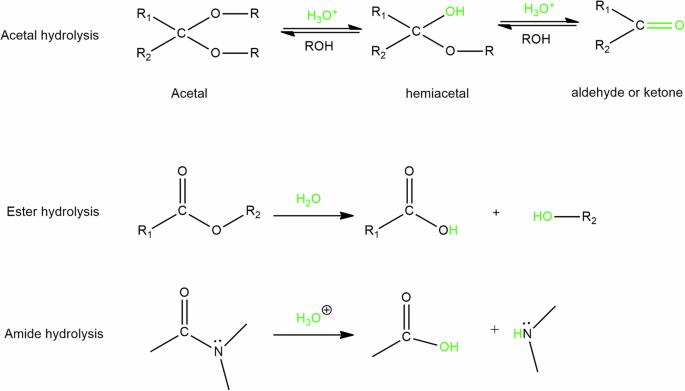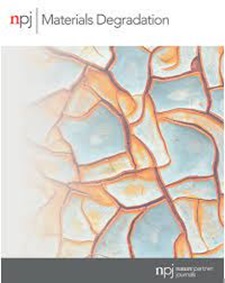A review of biomaterial degradation assessment approaches employed in the biomedical field
IF 7.6
2区 材料科学
Q1 MATERIALS SCIENCE, MULTIDISCIPLINARY
引用次数: 0
Abstract
The biological response to biomaterials plays a crucial role in selecting suitable materials for the formulation and development of tissue engineering platforms. Biodegradation is one of the properties that is considered in selecting appropriate biomaterials for biomedical applications. Biodegradation is the process of breaking down large molecules into smaller molecules with/without the aid of catalytic enzymes. The biodegradation process is crucial in the chemical absorption, distribution, metabolism, excretion, and toxicity (ADMET) process of biomaterials and small molecules in the body. Degradation of biomaterials can be followed by assessing the physical, mechanical, and chemical attributes of biomaterials. There are several techniques/parameters that can be targeted when studying the degradation of biomaterials, with gravimetric analysis, surface erosion, and morphological changes being the largely employed techniques. However, the techniques present a few limitations, such as technical errors and material solubility being mistaken for degradation, and these techniques can infer but not confirm degradation as they do not provide the chemical composition of fragmenting/fragmented molecules. The American Society for Testing and Materials (ASTM) guidelines provide techniques and parameters for assessing biodegradation. However, the ASTM guidelines for degradation assessment approaches and techniques need to be updated to provide sufficient evidence to draw conclusive decisions regarding the degradation of biomaterials. In this review, the degradation assessment approaches and techniques are critically reviewed about their advantages and disadvantages, and to provide suggestions on how they can still play a role in assessing the degradation of biomaterials. This review could assist researchers employ cost-effective, efficient, and multiple degradation assessment techniques to evaluate and provide sufficient information about the degradation of biomaterials. Suggested future ASTM guidelines for assessing biodegradation should include measuring parameters (such as chemical, mechanical, or physical attributes of biomaterials) in real-time, employing non-invasive, continuous, and automated processes.

生物医学领域采用的生物材料降解评估方法综述
生物材料的生物反应在为组织工程平台的配方和开发选择合适材料方面起着至关重要的作用。生物降解是为生物医学应用选择合适的生物材料时要考虑的特性之一。生物降解是大分子在催化酶的作用下或不在催化酶的作用下分解成小分子的过程。生物降解过程对生物材料和小分子在体内的化学吸收、分布、代谢、排泄和毒性(ADMET)过程至关重要。可以通过评估生物材料的物理、机械和化学属性来跟踪生物材料的降解过程。在研究生物材料降解时,有几种技术/参数可以作为研究对象,其中主要采用的是重力分析、表面侵蚀和形态变化技术。不过,这些技术也有一些局限性,如技术误差和材料溶解性被误认为是降解,而且这些技术不能提供碎片/碎裂分子的化学成分,因此只能推断而不能证实降解。美国材料与试验协会 (ASTM) 准则提供了评估生物降解的技术和参数。不过,ASTM 准则中的降解评估方法和技术需要更新,以便提供足够的证据,对生物材料的降解做出决定。本综述对降解评估方法和技术的优缺点进行了批判性评述,并就这些方法和技术如何在评估生物材料降解方面发挥作用提出了建议。本综述可帮助研究人员采用经济、高效和多种降解评估技术来评估生物材料的降解情况,并提供足够的相关信息。建议未来评估生物降解的 ASTM 准则应包括实时测量参数(如生物材料的化学、机械或物理属性),采用非侵入式、连续和自动化流程。
本文章由计算机程序翻译,如有差异,请以英文原文为准。
求助全文
约1分钟内获得全文
求助全文
来源期刊

npj Materials Degradation
MATERIALS SCIENCE, MULTIDISCIPLINARY-
CiteScore
7.80
自引率
7.80%
发文量
86
审稿时长
6 weeks
期刊介绍:
npj Materials Degradation considers basic and applied research that explores all aspects of the degradation of metallic and non-metallic materials. The journal broadly defines ‘materials degradation’ as a reduction in the ability of a material to perform its task in-service as a result of environmental exposure.
The journal covers a broad range of topics including but not limited to:
-Degradation of metals, glasses, minerals, polymers, ceramics, cements and composites in natural and engineered environments, as a result of various stimuli
-Computational and experimental studies of degradation mechanisms and kinetics
-Characterization of degradation by traditional and emerging techniques
-New approaches and technologies for enhancing resistance to degradation
-Inspection and monitoring techniques for materials in-service, such as sensing technologies
 求助内容:
求助内容: 应助结果提醒方式:
应助结果提醒方式:


